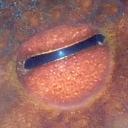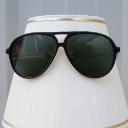Yahoo Answers is shutting down on 4 May 2021 (Eastern Time) and the Yahoo Answers website is now in read-only mode. There will be no changes to other Yahoo properties or services, or your Yahoo account. You can find more information about the Yahoo Answers shutdown and how to download your data on this help page.
What's the best camera mode for turtle pics?
6 Answers
- keerokLv 71 month agoFavourite answer
People who think turtles are slow definitely haven't encountered one yet personally or are just thinking about those large tortoises they see on TV. Turtles are fast, especially in water. My son even had one that cartwheeled its way to freedom.
Best camera mode? Manual.
- RobsteriarkLv 71 month ago
If they’re in the water your camera faces a relatively dark subject against a potentially dark and often reflective background.
So to counteract that, you may need to try adding a couple of stops exposure. If your camera has an exposure compensation setting that’s going to be +2. If it doesn’t but has manual mode then use A two stop slower shutter speed, or a two stop wider aperture or one of each.
Then check your results on the EVF or a shaded LCD and fine tune your adjustments. Bias towards too much exposure (not overexposure though) and shoot in RAW if available and you can then fine tune the exposure afterwards.
Bear in mind that unless the turtles are very close you’ll also be using either a telephoto lens or a zoom on high magnification. Either way, you’ll need a shutter speed fast enough to avoid blurring from camera shake.
The photo below of a Loggerhead turtle was taken by me in bright Mediterranean sunlight at 2:26pm in the afternoon, at Argostoli, on the Greek island of Kefalonia.
I used a 200mm lens on a Pentax K5ii (APS-C dDLSR), so that lens had an equivalent angle of view to a 300mm lens on a 35mm/full-frame SLR.
Exposure was ESP metering, shutter priority, at ISO200, f/5, 1/800th. Because it was so bright and because the sunlight was reflecting directly off the turtle, AND because I was using a polarising filter, I needed no exposure compensation for this image. Without the polariser the water would have been overwhelmingly reflective hiding all subsurface detail and I would definitely had needed to use exposure compensation.

- SumiLv 71 month ago
It depends upon your experience level. Personally, I would use manual mode. Using program/auto is what I'd recommend for anyone who has no idea on how to use their camera. Aperture priority is a good mode, too because it allows one to use an aperture to create a specific amount of depth of field.
The reason that makes manual mode the best for me is that I never have to worry about my camera's meter being fooled by a very bright/dark element within the scene. As I move around, there could be something in the scene like a bright reflection of the Sun that will dramatically change the exposure. In manual mode I never have to worry about that happening. Furthermore, I know that my photos will have the same look (the same depth of field) since the f/stop used is the same for all the images.







